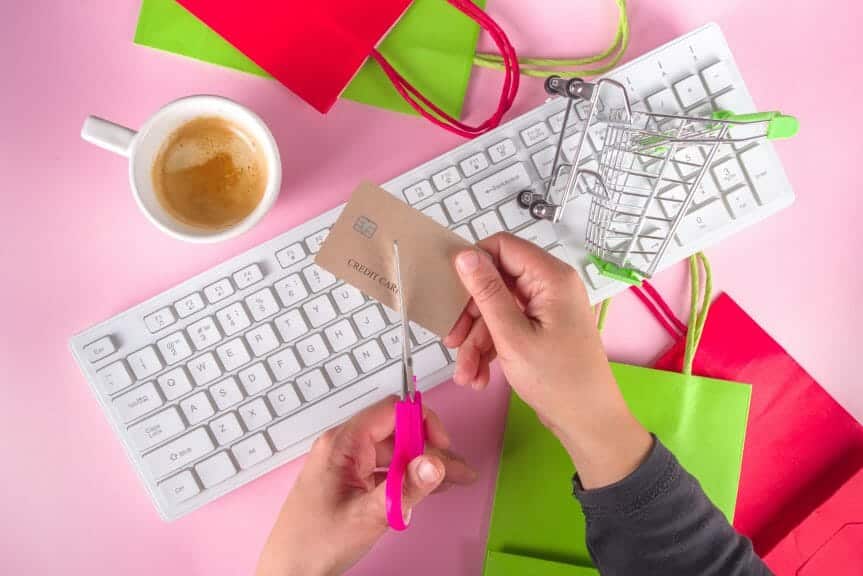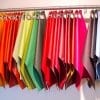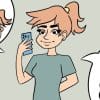We’re all familiar with social media influencers: charming, beautiful Internet stars with flawless makeup and ongoing sponsorships. Over the last twenty years, advertising has grown more widespread, and the consumer economy has exploded as a result. But do you really need everything influencers try to sell you? Not according to the de-influencing trend. Save your money—and the planet!—by taking the time to think before you buy.
The Rise of De-Influencing
Encouragement of conscious spending habits isn’t anything new. However, the idea’s popularity and rebranding as “de-influencing” is a relatively recent development. De-influencing is the idea of pushing back against traditional influencers, who serve as walking advertisements and encourage consumers to think twice before they buy something new. Instead, ask yourself questions like: Is it practical? How frequently will I use it? Is it worth the money?
Personally, I saw my first de-influencing video from Michelle (@michelleskidelsky) on Tiktok. Since then, she’s become a significant figure and face for the de-influencing movement, with a 37-part series on her main page. Michelle duets haul videos, telling viewers why they don’t really need all of those expensive or frivolous products.
Michelle gives quick, practical opinions on popular items in her videos. Many of these items are either useless or a waste of money, and while they may feel good for an impulse buy, ultimately, the average consumer is better off without them. For example, she concedes about a fingerprint door lock: “This is cool—not for renters, though. Not for me.”
The message of de-influencing is simple: you don’t really need so much stuff. Fast and unethical consumption is harmful to the environment, your mental health, and your wallet.
The caption in a de-influencing video from @Christina.mychas tells viewers: “I used to be a shopaholic impulse buyer to my core. When I stopped buying these things, changed my money habits, and increased my income—I changed my financial future and my life. Who knew?”
The Movement’s Corruption
So far, de-influencing seems like a nice, simple trend. Right? However, as the trend grew in popularity, former “influencers” began to twist its meaning, promoting one product over another instead of discouraging excess spending entirely.
“Products not worth your money + dupes,” reads the caption on @d1neis’ viral video. Instead of saying, “you shouldn’t buy this,” the narrative started to become: “you shouldn’t buy this—buy this other thing instead.” To quote TheMarySue.com, “this is exactly the opposite of what the de-influencing trend is trying to do.” This led to a misinterpretation of the movement, causing onlookers to conclude things like: “Sorry, but the de-influencing trend is still… influencing.”
In her popular Get Ready With Me video, user @Babbity.Kate gives a comprehensive overview of how the movement toppled. “It happened so fast, is the scary thing,” she says. “[The movement] caught on really fast because people were really starved for that message. And it lasted about two days.”
Kate also warns against viewing de-influencing as simply “negative product reviews.” “Let’s de-influence our mindsets about how quickly we need to buy things,” she encourages. In sum, the movement isn’t just about what to buy and not buy—it’s about slowing down, appreciating what you already have, and thinking twice before clicking on an Amazon or Shein link.
The De-influencing Message
Money is tight, the environment is suffering, and we, as consumers, must be more careful about how we impact the global economy. Odds are, you already have most of the things you need, and you can reuse and recycle instead of buying something new. Do you really need another five lipglosses or an automatic trash-bag collector? Probably not. It’s time to get back to the essentials.
Of course, nobody’s saying you can’t buy anything new ever again. New purchases can be fun, practical, and even necessary at times. We all need some small sources of joy in our life, and if that comes in the form of another cat-shaped pillow, then so be it. But the old American way—buying at a near-constant rate, with no concern for the larger impact—is ending. It’s time to de-influence our lives.
To read more about ethical consumerism, click here.















Forrest
December 27, 2023 at 9:17 am
I have noticed problem with pet products. Trying to get you to buy special oil for cats feet to rub on the skin to prevent cracking and a fungus that only affects one out of 1000000 cats. For example.